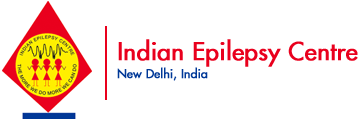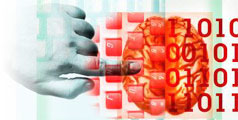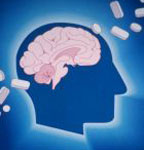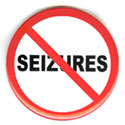
PLEASE CALL: 011-41614141
& 45695542
(Between 11:30 AM - 5:30 PM)

 |
FOR APPOINTMENTS PLEASE CALL: 011-41614141 & 45695542 (Between 11:30 AM - 5:30 PM) |
 |
Frequently Asked Questions On EpilepsyTYPES & CAUSES: Q: What are the different types of epilepsy? A: Most often epilepsy is classified according to the type of seizures or fits. The commonest forms are tonic clonic seizures (grand mal) and complex partial seizures (temporal lobe). There are many other seizures types that can be seen in persons with epilepsy. Epilepsy can also be classified according to the possible cause for the fits. Epilepsy is best looked at as a symptom, the causes of which are variable and multifactorial. Any disease of the brain can cause epileptic fits of some type. Some types of epilepsies tend to be familial and occur at a particular age. Q: What are the common causes of epilepsy? A: Some common causes of epilepsy in children are cerebral palsy (most often due to complications related to child birth), infections of the brain, metabolic and certain systemic diseases, any structural disease of the brain, head trauma and certain hereditary diseases. In adults structural brain disease, trauma, infections, toxins etc. are more often the cause. It must be remembered that in about 50% of cases of epilepsy, no cause can be determined even with the best of technology available today and the epilepsy is believed to be “idiopathic” in these cases. The “idiopathic” epilepsies are currently believed to have a genetic basis in their etiology. Q: What are the main features of different seizure types? A: The seizures can be divided into two main types : Generalized and Partial (Focal). The Generalized seizures are characterized by features of involvement of both the halves of the brain (cerebral hemispheres) simultaneously from the onset of attack. They may be tonic-clonic (grand mal), brief absences (petit mal) or even sudden, brief jerks of limbs (myoclonic). Partial (Focal) seizures start in one cerebral hemisphere and the electrical activity does not spread to the other side of the brain. Thus the term “Partial Seizure” means that only some part of the brain is involved. In some partial seizures, consciousness may be retained initially but then the fit may become secondarily generalized and the patient will become unconscious and have a major convulsion. The characteristics of a partial seizure reflect the part of the brain involved, and a wide variety of symptoms may thus occur. Partial seizures are divided into two main categories:
Q: What are Febrile convulsions? A: Febrile convulsions are epileptic fits occurring in relation to fever in children aged between 6 months and 5 years. The convulsion is usually brief and lasts for a few seconds to about a minute. Q: How common are Febrile convulsions? A: It should be remembered that almost 3% of all children will have one febrile convulsion. Most febrile convulsions occur in children between the ages of 1 – 2 years. It is estimated that almost 1/4 to ½ of children who get a febrile convulsion will have recurrent attacks and 1/3 will have a close family member with a history of febrile convulsion. Q: What is the outcome of children with febrile convulsion? A: Febrile convulsion can look very frightening for the parents who may think that their child is dying. This is not true as febrile convulsions are mostly harmless. The outcome of children with simple febrile convulsions is usually excellent. The outcome is not good if the convulsion is prolonged, confined to one half of the body, when it occurs in a child with a background of abnormal development or neurological dysfunction, and if the first convulsion occurs before 6 months of age. It is estimated that in such children about 5% will develop epilepsy later in life while only 1% of children with simple febrile convulsions develop subsequent epilepsy. Q: Can new-born babies have seizures? A: It is a well-known fact that anyone at any age can have seizures and new-born babies are no exception. Fits during the first month of life are not uncommon and usually occur in the first week of life. Most often the cause of fits in the neonatal period is an underlying metabolic abnormality (low blood sugar, calcium or magnesium). These causes can easily be diagnosed and treated accordingly. Such infants do not necessarily suffer from epilepsy in later life. In some children problems at birth can result in damage to the brain. The brain damage can be due to difficulties during labour, bleeding into the brain, lack of oxygen supply to the brain or developmental abnormalities of the brain itself. In many of such children, epilepsy can develop during later life. Q: What is the relation of mental retardation and epilepsy? A: About 3% of all children can be defined as mentally retarded. Mental retardation may be due to genetic, developmental, peri-natal, or environmental causes. Epilepsy occurs in up to 50% of patients with mental retardation. Q: Can mental stress cause epilepsy? A: Epilepsy is usually not caused by mental stress. However, it is well known that mental stress can certainly make the fits worse or even precipitate seizures in patients who are known to have epilepsy even while on treatment. Q: How common is epilepsy after head trauma? A: The risk of developing epilepsy is related to the severity of injury. In persons with open head injuries (when the coverings of brain are penetrated) about 40% develop epilepsy later on in life as compared to only 5% of those with closed head injury. Other factors that predispose to development of epilepsy in persons with head injury are associated bleeding in the brain, occurrence of seizures within the first week of injury and prolonged period of unconsciousness after the injury. It has been estimated that almost half the patients with epilepsy secondary to head trauma develop it within the first year of injury and about 75% develop within two years. In some series it has been estimated that almost 10 – 15% of all cases of epilepsy are secondary to head trauma. Q: Does excitement predispose to fits? A: Yes. It is known that some people with epilepsy can have fits when they are excited. Q: Can some people bring on their fits? A: Yes, it is possible but not common in connection with genuine fits. Some children and young people are known to get fits while over breathing or watching flickering light. In such cases they can bring on a fit at a time that my suit them. The more often seen fits that are known to be brought on by individuals are known as pseudo-seizures or false fits. These fits may look like being real to an untrained observer or a common person on the street. People who get pseudo-seizures bring on a fit to achieve some purpose (e.g. to get out of a difficult situation), although they may be doing it subconsciously. Pseudo-seizures can pose a serious problem in their diagnosis and treatment even to a well-trained Neurologist. Next» DIAGNOSIS |
Myths & Facts  |